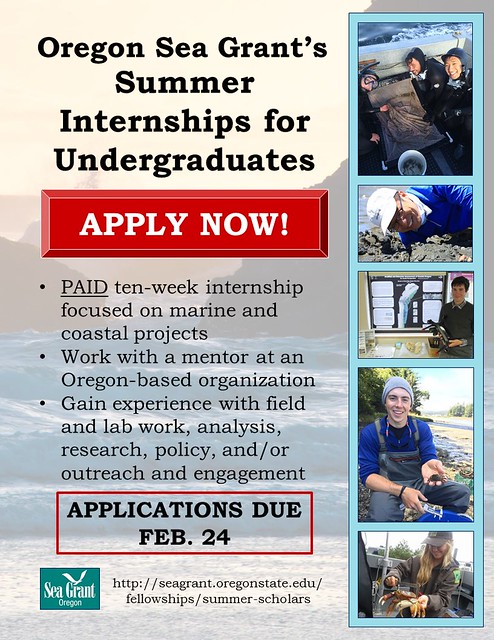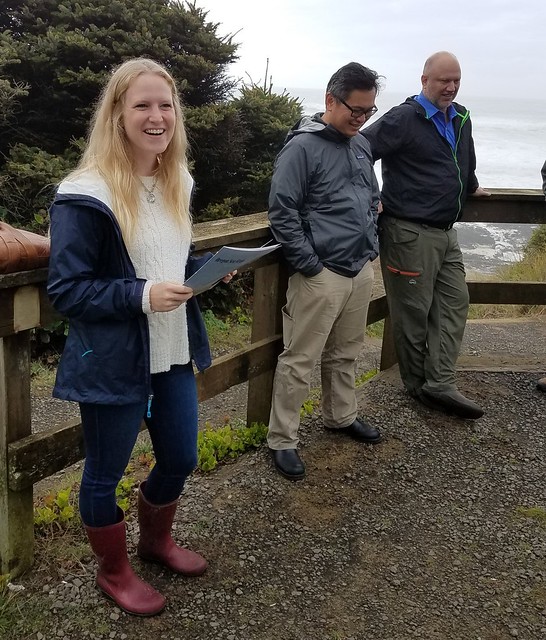I never thought I’d be the person to experience culture-shock. I especially never expected it to happen in my home-country, in a town not that different from the place I grew up. I’m from a small town in Maryland, a suburb grown out of farm country at the intersection of two decently small highways. I went off to college in Los Angeles, excited to be on the west coast and ready to adapt to the city life as quickly as possible. Four years later, I considered myself a local.
One week ago today, I was graduating from UCLA, packing up my bags, and getting ready to fly up to Oregon. I’d never been to Oregon until this week, but from google images and the TV show Portlandia, I thought I had a pretty good idea of what I was in for: lots of trees, lots of water, and some pleasantly quirky Oregonians. It wasn’t until I got here that I realized how different Newport (the town I am currently living in) is from Los Angeles, and even Maryland.
This past Wednesday I wanted to go into town. The one small thing standing between our Sea Grant Intern dorms and the rest of Newport is one very large bridge. I don’t have a car, so I decided I’d take the bus, just like I’d always done in LA. Turns out there is only one bus in Newport and it runs a total of five loops around the town per day. I managed to somehow catch the last bus, which is harder than it seems as there are no bus signs here. My confusion with this was confirmed once on the bus as a gentleman informed me “It’s Newport, we don’t have signs.” The casual irregularity of this system was further enforced when the bus driver told me “You just gotta holler at me when you want to get off.” So, I hollered as best I could and strolled off the bus about a block past the store I was aiming to go to. Once ready to go home, I faced my next challenge of getting home without the bus running. I asked the women in the store if there was a taxi service. They said no, “It’s Newport, you’re lucky to even have the bus running.” I half-heartedly asked if uber existed here? Definitely not. So, is my best option to walk across the bridge? “Yes,” they said, “but hold on to the railings, it’s really windy.” And windy it was. I don’t know what the speed was, but it was windy enough that every time someone walked into the store, the door would burst open and rattle the ceiling tiles. It was the kind of wind that gives you a little shove forward while walking if you pick your foot up at the right time. So, I braced myself, held on to the railing, and walked across this bridge like an obvious out-of-towner. I’d also like to point out that I have a rather large fear of heights, and this bridge is 246 feet tall (according to Wikipedia).

Yaquina Bridge
I survived the walk across the bridge, with a burst of adrenaline as the prize for conquering my fear. I decided to take this opportunity to go for a run and explore some of the surrounding area. I picked a route that would send me to a nice beach run. As I’m running, I look to my left to discover a surprise secret waterfall carved into the bluff right next to me. It was amazing! A secret not-so-little waterfall hiding in the cliffs! It must have been about 30 feet tall. I ran over and stuck my feet in. The cold water felt as refreshing as if I were drinking it. I climbed all around the edges of the waterfall, sliding in the dark gray mud like a little kid.

The magical waterfall
What is this mysterious place that I’m in? A place where they don’t have ubers (even my small town in Maryland has uber) and Mother Earth humbly juts out waterfalls right onto the beach. I read a Humans of New York post recently which reminds me a lot of this point in my life. The interviewee was describing how she wanted to move to a new country because she wanted to be a tourist in her own life again. After four years of trying to become a local in Los Angeles, a city swimming with tourists, I find myself in a state I’ve never been, in a sleepy beach-town with a population of ten thousand and once again a tourist in my own life.
https://en.wikipedia.org/wiki/Yaquina_Bay_Bridge




























